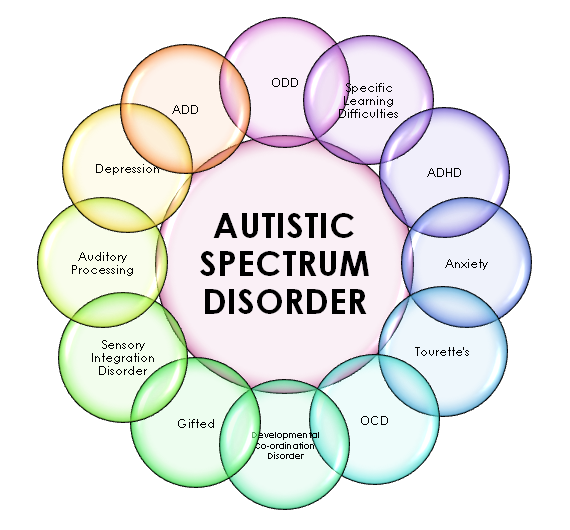The Duty of Education in Supporting Students with Autism: Best Practices
Wiki Article
Understanding Autism: A Comprehensive Overview to Indications and Signs And Symptoms
Autism Spectrum Disorder (ASD) incorporates a wide array of qualities that can significantly influence a person's social communications and day-to-day performance. Understanding these subtleties not just help caretakers and teachers in giving suitable support but likewise promotes a much more comprehensive environment for people with ASD.Review of Autism Spectrum Disorder
Specifying Autism Spectrum Disorder (ASD) entails recognizing it as a complicated neurodevelopmental condition identified by a variety of difficulties in social interaction, communication, and behavior patterns. The term "range" reflects the broad variability in signs and their seriousness, which can differ considerably from one person to another. ASD generally manifests in early youth, although some individuals may not get a diagnosis up until later in life.Elements influencing the development of ASD include genetic proneness and ecological elements, although the precise causes remain under investigation. Medical diagnosis often depends on behavior analyses, as there are no conclusive medical tests for ASD. Early treatment is important and can dramatically improve end results, concentrating on boosting communication skills, social communications, and flexible habits.
People with ASD might additionally show distinct staminas, such as outstanding interest to detail or specific areas of knowledge. Understanding the complex nature of ASD is vital for cultivating a comprehensive environment that fits neurodiversity. Continued study is essential for creating reliable treatments and support group, making it possible for people with ASD to grow and accomplish their potential within culture.
Usual Signs of Autism
Identifying the common indicators of Autism Spectrum Condition (ASD) is crucial for very early recognition and treatment. These indicators can vary commonly in seriousness and discussion, however certain qualities are regularly observed in people with ASD.One of the most prevalent indicators is a marked problem in developing and preserving eye get in touch with. People may additionally exhibit limited passion in social communications and show a preference for singular play.
Sensory sensitivities are also usual; people might overreact or underreact to sensory stimuli, such as noises, structures, or lights. autism. Language growth can be atypical, with some youngsters exhibiting postponed speech or using language in unusual ways, consisting of echolalia-- repeating sentences or expressions listened to elsewhere
It is necessary to keep in mind that not every individual with ASD will certainly display all these signs, and the degree of these behaviors can vary dramatically. Early acknowledgment permits timely assistance and resources, boosting the quality of life for those on the range.
Social Communication Difficulties
Social communication challenges are a hallmark of Autism Spectrum Disorder (ASD), influencing a person's ability to involve successfully with others. These problems can materialize in different ways, including obstacles in launching and maintaining conversations, comprehending social hints, and responding appropriately in social interactions.Individuals with ASD might battle with nonverbal communication, such as eye call, faces, and body movement. This can result in misunderstandings, as their communicative intent might not be correctly interpreted by others. Additionally, they might locate it challenging to realize the nuances of tone and context, which are necessary for reliable communication.
In group settings, people with ASD might really feel overwhelmed and may not understand just how to join in discussions (autism). They may also display irregular conversational patterns, such as monologuing concerning particular passions without recognizing social reciprocity
Additionally, these obstacles can cause social isolation or troubles in forming connections, as peers might misunderstand their actions or communication design. Recognizing these social communication difficulties is essential for promoting helpful environments that promote social skills development and enhance the high quality of interactions for people on the autism range.
Sensory Responses and level of sensitivities
Many individuals with Autism Range Problem (ASD) experience enhanced sensory level of sensitivities that can considerably impact their every day lives. These sensitivities might manifest as over-responsiveness or under-responsiveness to sensory stimuli, consisting of noises, lights, structures, tastes, and smells. A person with ASD might discover day-to-day sounds, such as a vacuum cleanser or crowded environments, extremely upsetting, leading to stress and anxiety or disasters. Conversely, some may display an indifference to pain or severe temperature levels, which can present security worries.Sensory processing differences in people with ASD can additionally affect their capability to involve in social communications and regular activities. As an example, a youngster that is sensitive to touch may withstand physical love or prevent certain garments textiles. A choice for specific appearances or preferences can limit nutritional choices and develop difficulties throughout nourishments.
Comprehending these sensory level of sensitivities is crucial for recognizing the one-of-a-kind experiences of people with ASD. Understanding of their sensory accounts can foster far better communication and support strategies, creating an atmosphere that fits their needs and boosts their top quality see here now of life. Ultimately, recognizing sensory sensitivities is a crucial element of comprehending the more comprehensive range of autism.

Sustaining People With Autism
Reliable support for people with Autism Range Disorder (ASD) is essential for improving their total health you could check here and promoting freedom. Assistance approaches must be customized to fulfill the one-of-a-kind requirements of each person, considering their difficulties and toughness.
Social skills training can likewise play a pivotal duty. autism. Involving people in team tasks or role-playing situations can enhance their ability to browse social interactions. In addition, it is crucial to educate family members, caregivers, and peers concerning ASD to foster a comprehensive and supportive area
Final Thought
In conclusion, a comprehensive understanding of Autism Range Problem is important for recognizing its symptoms and indications. Early recognition of common characteristics, such as social interaction obstacles and sensory level of sensitivities, allows caretakers and educators to execute efficient interventions. By fostering boosted interaction and social check this abilities, individuals with autism can navigate their environments a lot more effectively. Ultimately, raised recognition and support can substantially enhance the high quality of life for those influenced by ASD.Autism Range Disorder (ASD) includes a vast variety of qualities that can significantly influence an individual's social interactions and daily performance.People with ASD may struggle with nonverbal interaction, such as eye contact, face expressions, and body language.Several individuals with Autism Spectrum Disorder (ASD) experience increased sensory level of sensitivities that can dramatically influence their everyday lives.Sensory handling differences in individuals with ASD can likewise influence their capacity to involve in social interactions and routine tasks.Recognizing these sensory level of sensitivities is vital for identifying the special experiences of people with ASD.
Report this wiki page